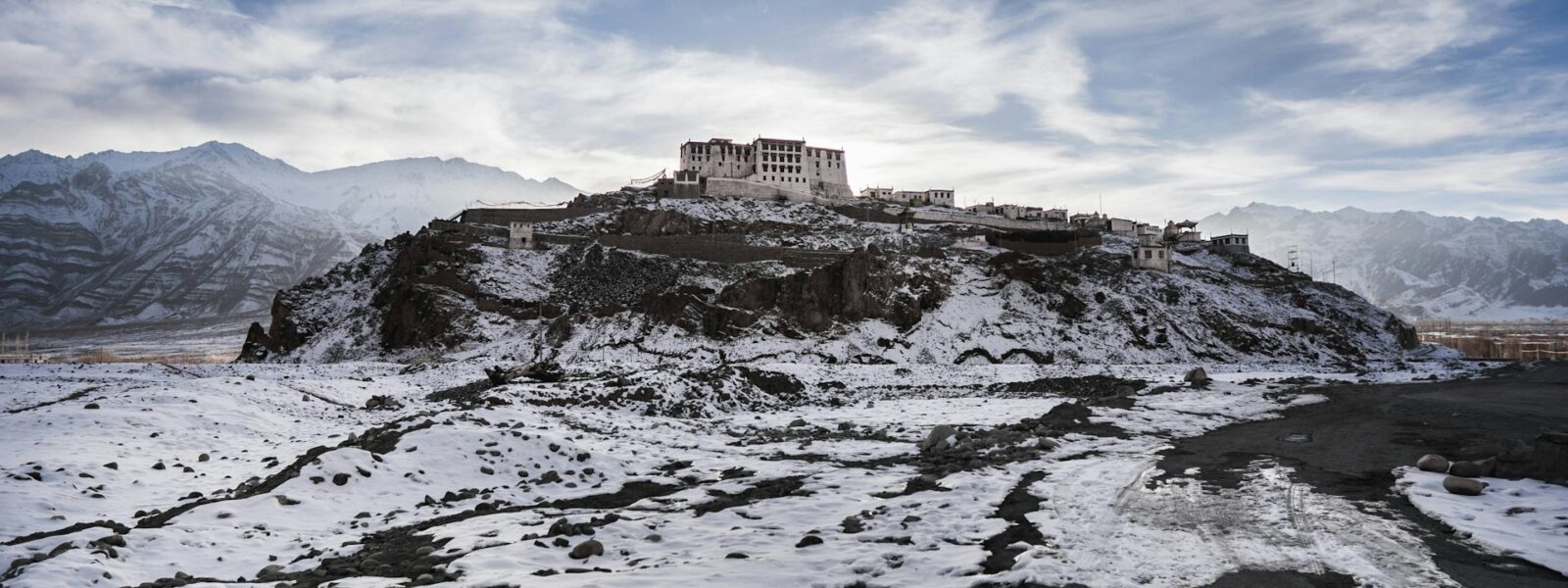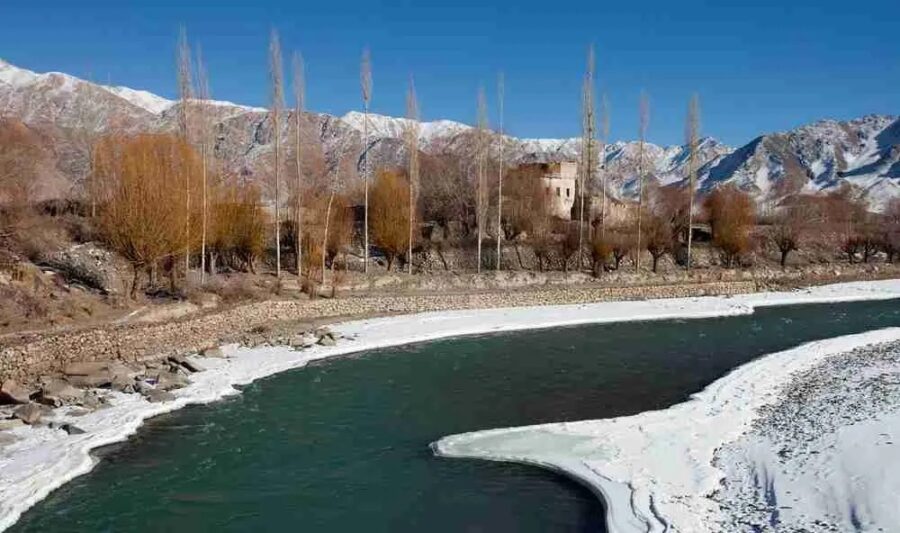Where Snow Pauses the Roads, People Keep Moving
By Elena Marlowe
Prelude — The Last Convoy Before the Mountains Sleep
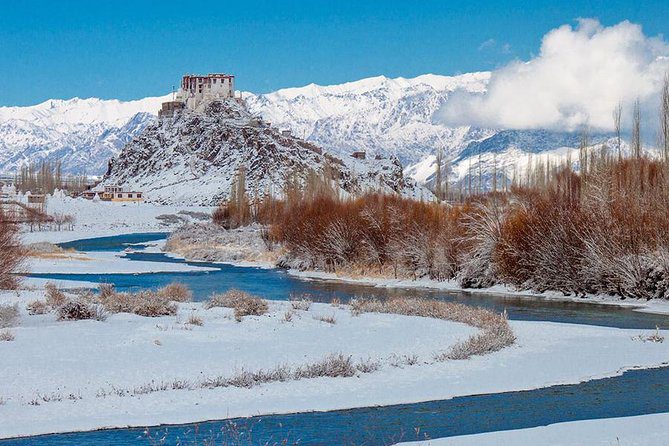
Exploring the beauty of winter Ladakh offers a unique experience that is unlike any other.
Dawn on the Freight Yard
The freight yard on the edge of Leh is a pale skeleton under the first light. Frost clings to tarps, diesel vapour coils in thin air, and voices echo against the cold iron of lorries. Before the mountain passes close, before snow turns the high roads into silence, this is the last chance to move what keeps Ladakh alive through the winter months. Men in wool caps and fingerless gloves move between stacks of rice, drums of kerosene, and crates of medicine. A child runs tea from one truck to another, the steam curling like breath from the valley itself. In every gesture is the knowledge that for five months there will be no new supply, that life here depends on what can be carried before the mountains sleep. The convoy waits like a held breath. The first driver climbs into his seat and looks east where the sky begins to pale. He turns the key and the sound rolls through the yard—low, determined, human.
When the Roads Turn Silent
Valleys Becoming Islands
By mid-November the ridgelines above 5,000 meters vanish under the first deep snow. Tanglang La, Khardung La, Chang La—names that mean connection—become white barriers. Down in the valleys the world contracts. Zanskar, Nubra, and the high Changthang plateau enter months of quiet isolation. The radio still crackles, but less each day. The post truck makes its last run and then the world is carried on foot or by rumor. Inside houses, families seal windows with cloth, stock fuel, store barley and butter. The rhythm changes from motion to endurance. Children learn to read by the light of a single bulb powered by a small generator; its hum becomes the measure of evening. Outside, the river begins to freeze at the edges, a slow construction of glass that will one day hold the weight of a person. Winter in Ladakh is not a pause; it is a narrowing of distance until community becomes the only geography left.
Keeping the Valley Alive — Hands That Replace Roads
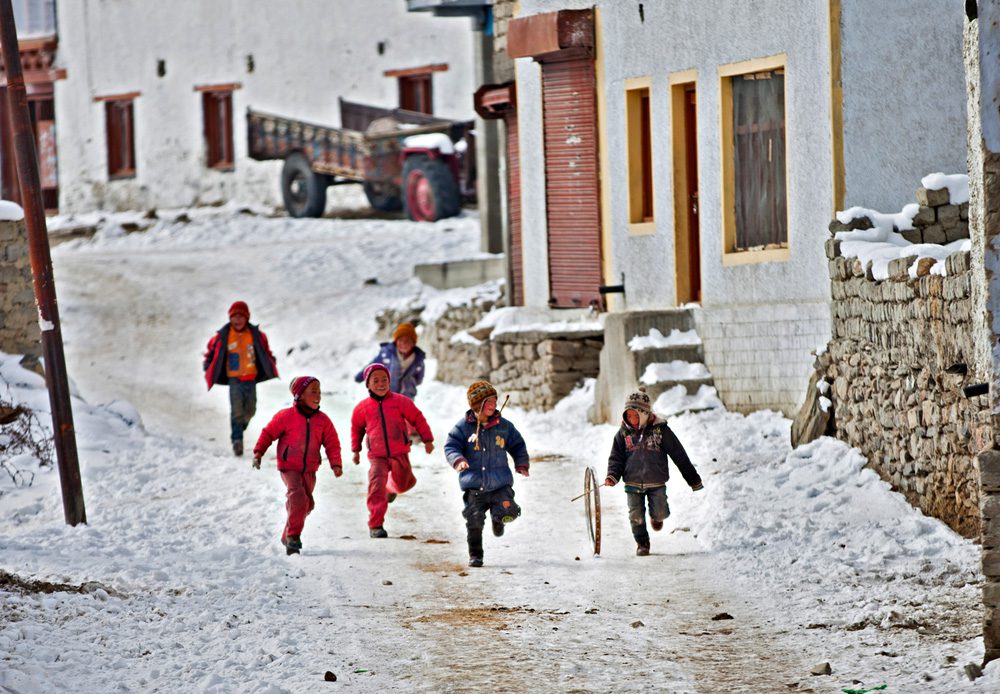
The Quiet Work of Connection
When the last truck has gone, the work begins again in smaller ways. Paths are cleared between houses, snow packed into bricks to build wind walls, supplies divided so that no one burns through their fuel too fast. A group of young men leaves before dawn toward a hamlet ten kilometers away carrying sacks of flour on sledges; they move without talk, following the faint light of a kerosene lantern. This is what winter logistics looks like now: human footprints instead of tires, silence instead of engines. Women in the village keep lists of what remains—who has rice, who has medicine, who can spare milk. The barter network that once defined Ladakh’s economy returns each year like migration, invisible but exact. The act of sharing becomes infrastructure. In a landscape where roads have vanished, people themselves form the routes of survival.
Invisible Convoys
Every few days, news travels of the army’s snow-clearing units somewhere near the pass, of radio contact re-established for an hour, of a postman walking the frozen river with a bundle of letters wrapped in oilcloth. The Border Roads Organisation works under snowdrifts taller than men, digging with patience and faith that spring will come. Their progress is unseen by most, yet each meter they reclaim from ice is a small defiance of the cold. Inside monasteries, monks record temperature and snowfall with the same devotion as prayer. In this high silence, labour itself is a kind of belief. The mountains do not yield, but they do listen; they allow enough space for persistence to take root.
The Winter Mind — Philosophy of Endurance
Learning the Pace of Cold
After a month the rhythm becomes internal. Days shorten, routines tighten. People speak more softly as if to conserve sound. The concept of time flattens; everything moves according to weather. In this quiet Ladakh teaches a particular logic: that endurance is not resistance but rhythm. Survival depends not on speed but on synchrony—with wind, with neighbour, with silence itself. The world shrinks to a room, a courtyard, a single path beaten through snow, yet within that smallness something expands: attention. The mind begins to notice the grain of wood, the pulse of a stove, the way frost forms on the inside of glass. What seems still is full of motion too fine to see. High-altitude life turns contemplation into practical skill; philosophy into muscle memory.
When the Roads Return
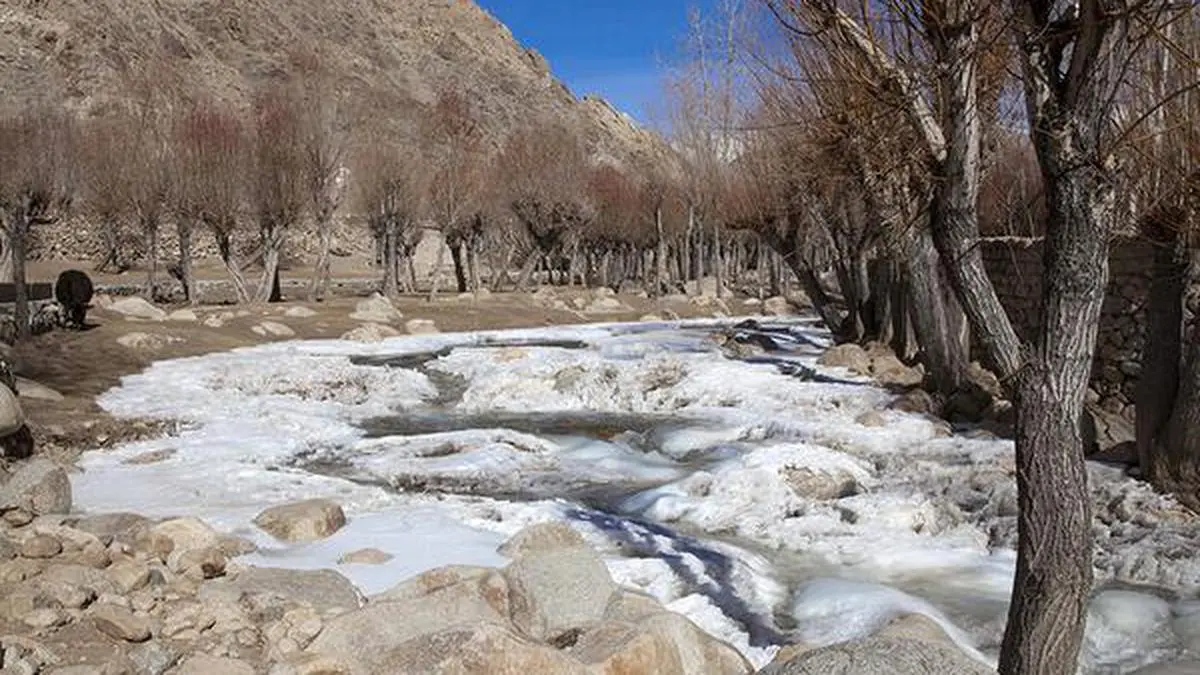
First Thaw, First Engine
By late March the colour of light begins to change. The edges of snowbanks turn grey, then soft. Somewhere high above, a raven calls and its echo sounds like movement. One morning a sound rises from the valley floor—low, mechanical, impossible—the rumble of a diesel engine pushing through the thaw. People step outside, squinting against the glare. The road has returned, or at least a fragment of it. The first truck arrives covered in salt and prayer flags faded to pale threads. Children run beside it, laughing, shouting for chocolate, for batteries, for the proof that the world has not forgotten them. The driver, eyes red from the altitude, waves and keeps rolling. Behind him come others, each carrying a piece of the world back into place. Spring in Ladakh is not an arrival; it is a reassembly of what the cold scattered.
Restoring the Rhythm
As snow retreats, new cracks appear where ice once held the earth together. The BRO crews patch them, shovel gravel, rebuild guardrails, repaint distance markers. Villagers bring tea and bread to the workers; hospitality returns as the first social currency of the year. Markets in Leh open cautiously. Barley is traded for diesel, wool for medicine. The rhythm of exchange begins again, slower than before but steady. Everyone knows it will all repeat: the rush of autumn convoys, the silence of winter, the patient reopening. There is comfort in this repetition. It affirms that endurance is not an exception here—it is the pattern by which life measures itself.
Epilogue — The Sound of Returning Engines
The Road as Memory
On the first clear evening of April, I walk along the rebuilt stretch beyond the Indus bridge. The air smells of thawed earth and diesel. Trucks hum in the distance, their headlights carving through dusk. In the fading light, the asphalt gleams like a river reappeared. I think of the months when all this was silence, when movement meant footsteps on snow and the map of survival was drawn by people’s hands. The road’s return is not triumph; it is continuation. The mountains do not open their gates—they simply allow. Somewhere a radio plays a folk song about spring, and for the first time in weeks, I hear laughter travel farther than the walls of a house. The sound of the returning engine is more than machinery; it is the heartbeat of a community that never truly stopped moving.
“The mountains do not open their roads; the people reopen their world.”
FAQ
Why do roads in Ladakh close during winter?
Because the high mountain passes such as Tanglang La, Khardung La, and Chang La receive heavy snowfall that blocks transportation routes. Temperatures drop below minus twenty degrees Celsius, making snow clearance extremely difficult until early spring.
How do people in Ladakh survive when cut off?
Villagers store food, fuel, and butter months in advance. Communities share resources, maintain barter systems, and use traditional heating stoves. Survival is rooted in cooperation rather than isolation.
Are there alternative routes during winter?
When roads close, the only possible connections are through small airlifts by the Indian Air Force or, in extreme isolation, walking over frozen rivers like the Zanskar. These routes are perilous and depend entirely on weather conditions.
How does climate change affect winter logistics?
Unpredictable snowfall and sudden thaws make planning harder. Some years roads stay open longer, others close earlier. The changing rhythm forces new adaptations but also endangers fragile ecosystems and traditional timing of supplies.
Conclusion
Winter logistics in Ladakh is not just about roads, convoys, or the movement of goods. It is a story of endurance, of human patterns synchronized with nature’s extremes. Each season rewrites the same lesson: connection is not measured in kilometers but in persistence. When the roads disappear, what remains is the will to share, to walk, to keep the valley alive. And when the first trucks return, they carry not only supplies but the proof that resilience here is ordinary, practiced, and unwavering.
Closing Note
In the high silence of Ladakh, the world learns a quieter form of progress. The road’s return is not an ending, but a reminder that survival—like the seasons—is cyclical, collective, and quietly magnificent.
Author
Elena Marlowe is the narrative voice behind Life on the Planet Ladakh, a storytelling collective exploring the silence, culture, and resilience of Himalayan life. Her work reflects a dialogue between inner landscapes and the high-altitude world of Ladakh, where endurance becomes grace and stillness speaks.

